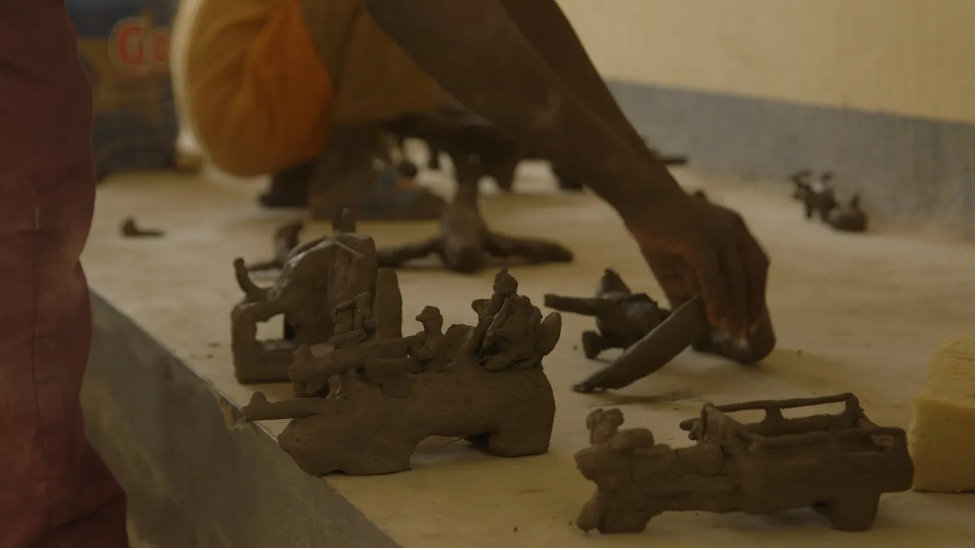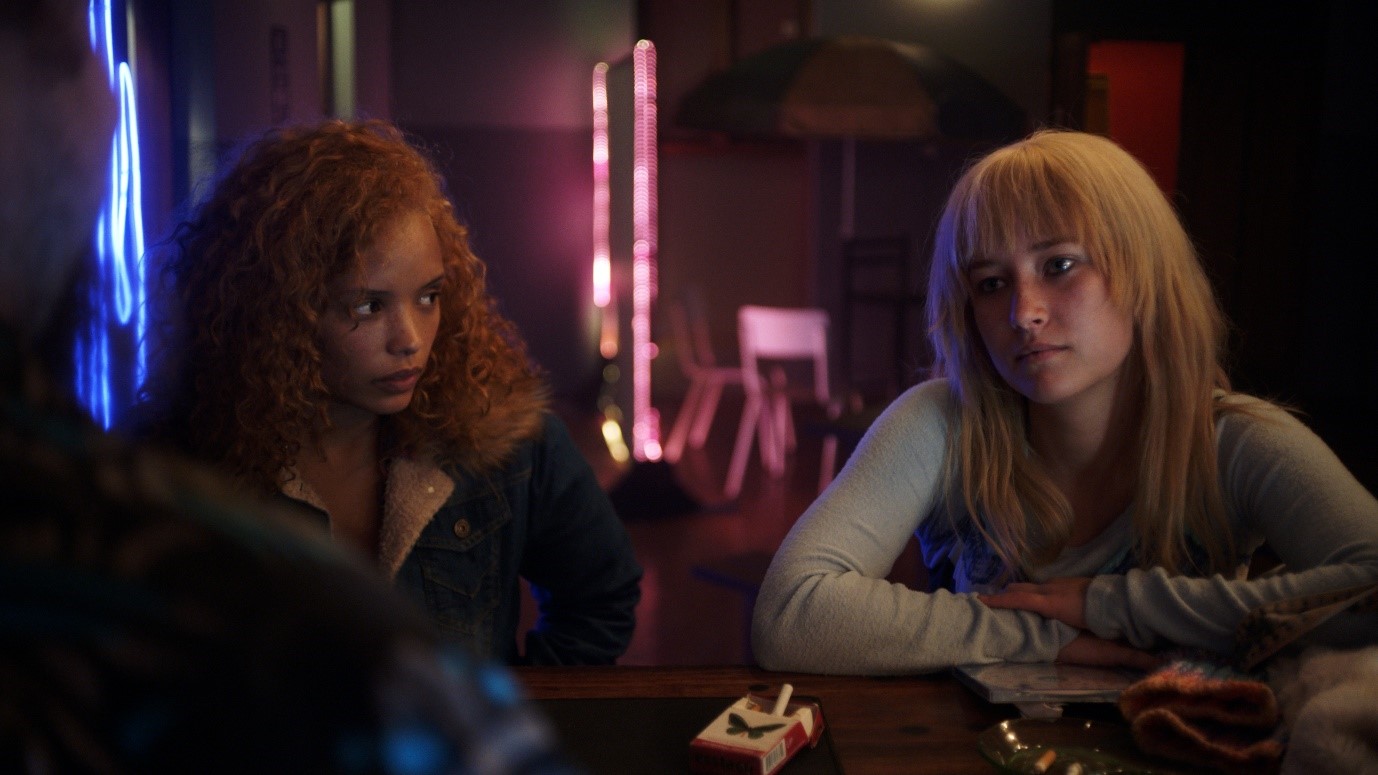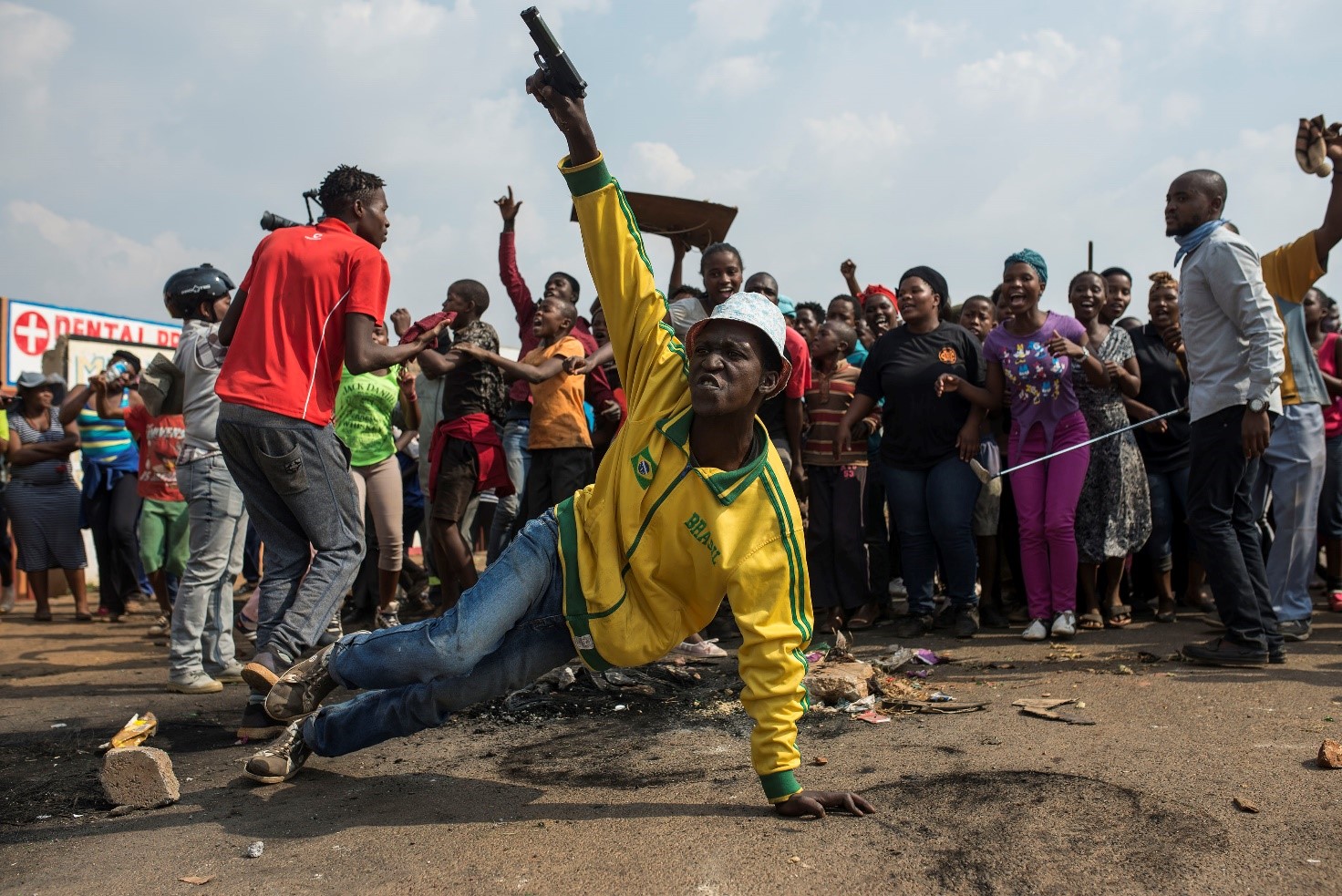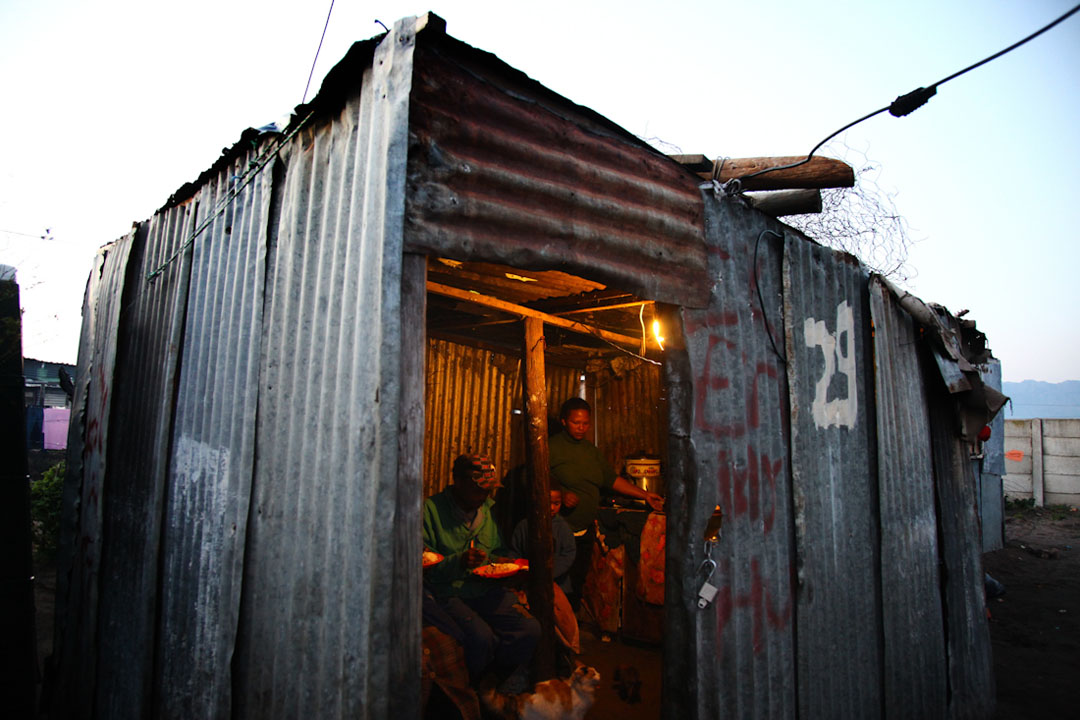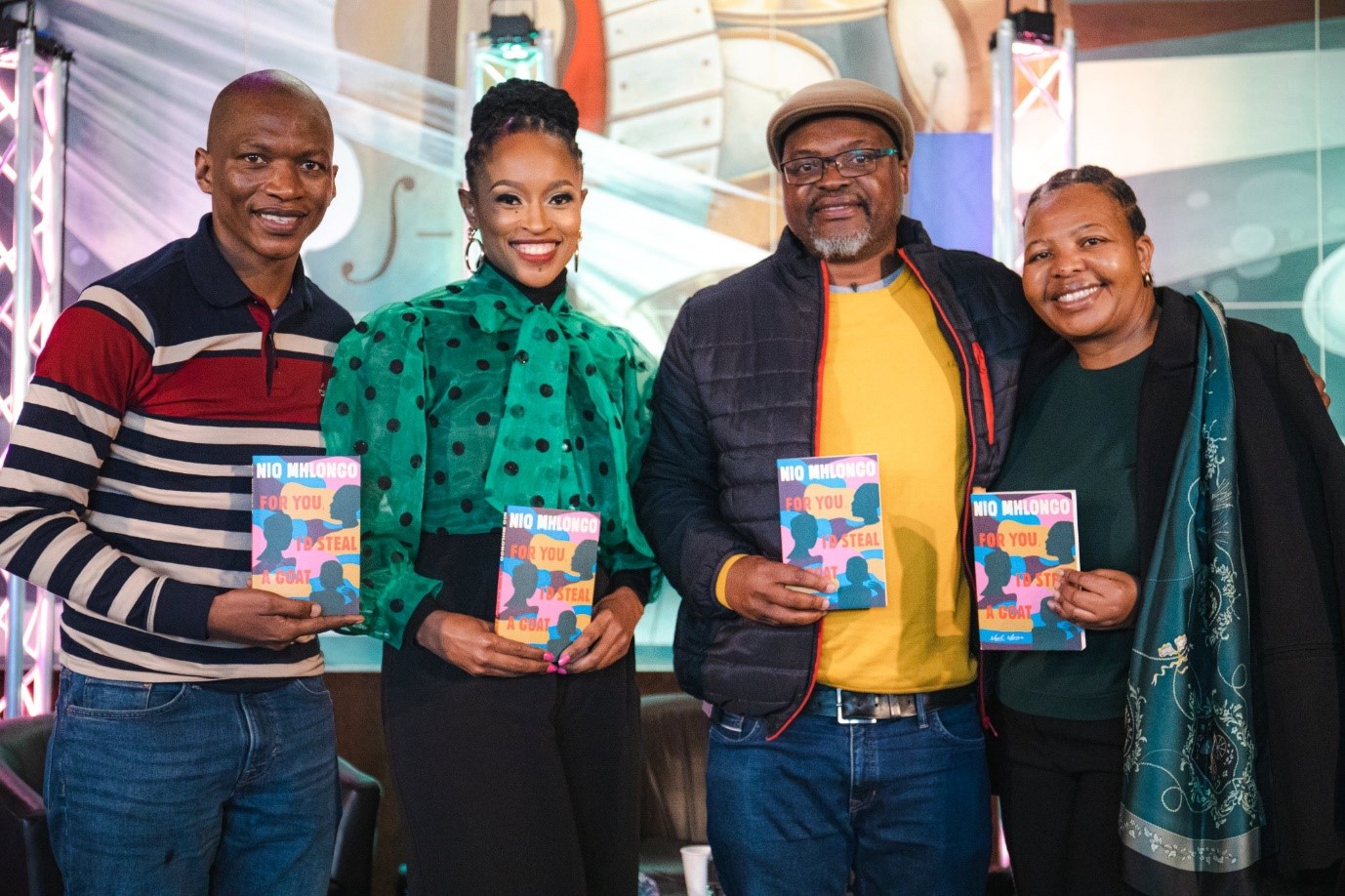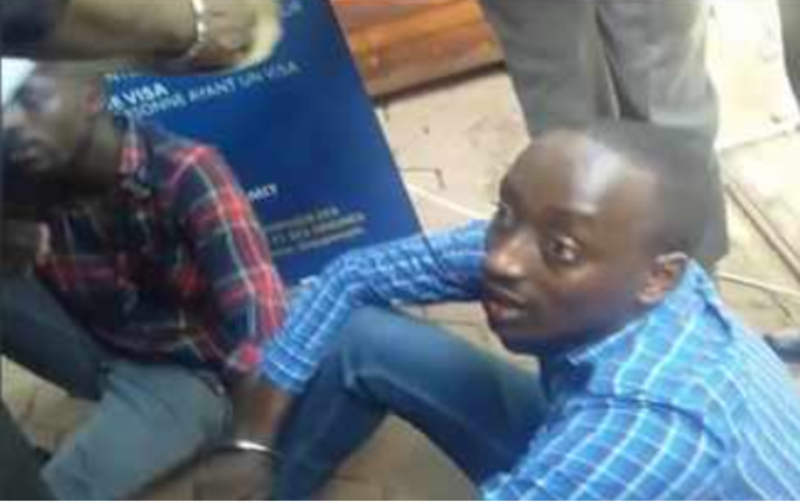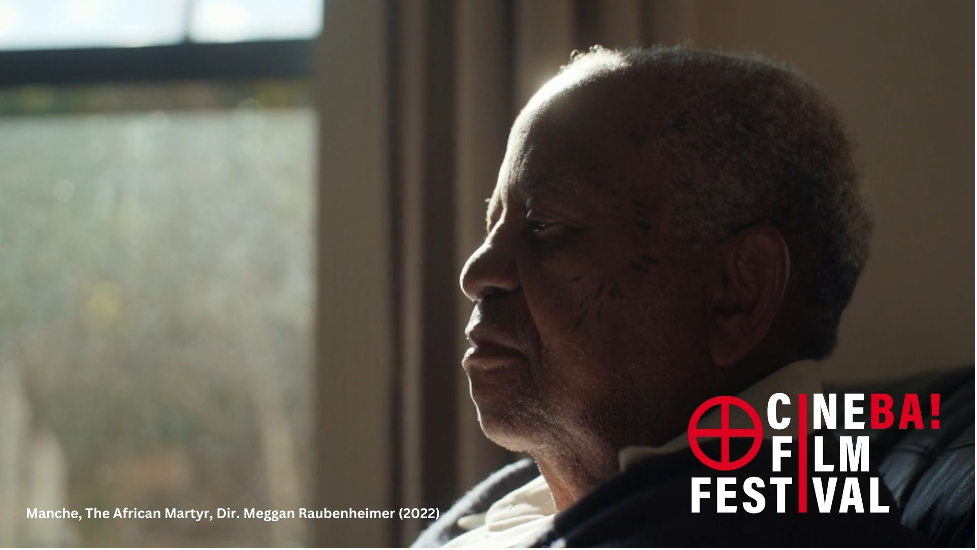The process of resolving our suffering through truth-telling grants documentaries power in telling our stories. However, often documentaries prefer a simple narrative of our suffering. It is reduced to an individual Black soldier pulling the trigger against a Black protester at the request of a Black politician. Although these events are true, understanding how violence is endemic to blackness is rarely a concern for these truth-telling exercises. The problem is that a simple narrative can only resolve a simple suffering. To address structural violence, we must offer structural truths.
It is through this lens that we should criticise The Bisho Massacre: Who Pulled the Trigger?, a political tragedy documentary about the events of the 1992 Bisho Massacre where 29 Black people were shot dead and 200 were injured by the Ciskei Defence Force (CDF). 80 000 protesters gathered in the then-Ciskei to protest against a regime of oppressive power within the Bantustan and push for the region’s inclusion with a democratic South Africa, which was the vision for our liberation at the time.
We can appreciate the power of a documentary to express the truth, but this film falls short in explaining the condition of Blackness during South Africa’s tumultuous transition to democracy. A focus on the factual accounts of violence, backed up by archival material and interviews from primary sources, is helpful. But overall, it fails in the same area as the Truth and Reconciliation Commission (TRC). We know what happened, but not why. The unanswered question remains: What mechanisations of the world have created a structure of violence that Black people are oppressed under? Knowing that we were killed, how we were killed and by whom is a necessary, but insufficient exercise. The true power of the documentary is liberated when we begin to explore why.

Who Built the Gun?
As evident in the title of the documentary, we itch to understand who exactly ordered the massacre of Black people. We urge to hold these people accountable and prevent the recurrence of this injustice. But given 2012’s Marikana massacre and the continued suffering of Black people in post-apartheid South Africa, perhaps it is not enough to only hold the person who pulled the trigger accountable. This is the discomfort of this documentary. It fetishizes the narrative that a particular leader or a particular soldier holding the gun is fully accountable for the bullet. There is a scene where Pumla Goboda-Madikizela of the TRC criticises the humanity of a man involved in the massacre. This is a powerful moment but by individualising an evil, it creates a narrative of conquering that evil by conquering the individual.
Certainly, the documentary proves people were brought before the TRC to account for their role in the massacre. It displays the intensity of emotion by the families of slain Black people. For those who continue to suffer, the truth is necessary. It is for this reason that understanding how Black pain is structural is crucial, otherwise we will continuously undergo the process of resolving our pain by holding the next individual fully accountable. Meanwhile, our suffering will endure.
By the end of the documentary, there is the painful feeling that Black life is subjected to violence but there is also the misconception that there have been attempts to alleviate this suffering. After all, the documentary presents an agenda that herofies the African National Congress (ANC) portraying the organisation as harbingers of peace.
A peaceful post-apartheid South Africa is a foundational myth. The process of resolving our suffering can only start when we are liberated from oppressive structures. The Black soldier, in this case, wept before the TRC feigning powerlessness over the gun that they held. Instead of trying to understand how a soldier can feel powerless over the weapon they wield, the documentary focuses more on making the point that this Black man held the gun. Indeed, he held the gun. But, if we want Black people to stop holding guns, we will need to understand how this world of violence was created and how to liberate blackness from its bullets.
The documentary does slightly explore the conditions of power and oppression which led to the massacre, but shy toward creating a face for Black oppression. We urge to find out who exactly held the gun and hold some metaphorical weapon of truth back at them. But, we will be left with an itch. In some ways, we need to know who manufactured the gun.
Violence From Nowhere
In the early 1990s, South Africa underwent a reconciliatory event which claimed to be an exercise of truth, as explored by the documentary. The objective was to understand both the violence of the apartheid era and how it had not been fully subdued. The TRC wanted to know why Black bodies were still killed in events such as the Bisho Massacre. A convenient answer given toward the end of the documentary was to target particular individuals involved in the massacre and declare them evil.
The commission to gather information on the events suffered through our transition should have sought to understand the condition of violence blackness is subjected to. The documentary also missed an opportunity to express that the structure of the world lends itself toward suffering for Black people. Instead, we are left understanding evil as an individual exercise by a few members of the Ciskei Defence Force. We are pointed to Brigadier Oupa Gqozo and to Colonel Horst Schobesberger as responsible parties.
The documentary offers helpful historical information on the establishment of Ciskei and its descent into dictatorial regime. This information is simply presented as the rehashed narrative of apartheid segregation and Bantustan autonomy. There is little explored about the socioeconomic conditions of these regions which empower the “iron-fist” leaders the documentary comments on.
We are expected to just know that a dictatorship rose through a coup but not understand the conditions of that overthrow. The documentary presents a thesis of “violence from nowhere”. Somehow, Ciskei became an authoritarian region and the bravery of the ANC rose up against it. Prior to the massacre, there was a clear culture of violence brewing in Ciskei. If anything, noting in clear terms that they were ruled by brute militaristic force is a useful condition to explore. Instead, the documentary brushes over these details as an exposition montage. We are left wondering how exactly a dictatorship emerged, where Oupa Gqozo rose up from, who supported him, what their reasons for support were and endless more queries. This is especially true given the information we are told about Lennox Sebe, who preceded Gqozo. Sebe is described as an “iron-fist” leader. Certainly, there were clear structures of violence embedded in Ciskei for decades prior to the massacre. Why are these decades compressed into a sound bite?
For an exercise in truth-telling, there are many truths the film chooses not to explore. There are many hands which contribute to the construction of the trigger. There is not only the finger which pulls it. Violence does not come from nowhere.
Another Silent Black Mass
Archival footage in the documentary shows Black bodies in a mass, crouching down to avoid bullets. Black bodies are always in a mass and always on the ground. Few of these bodies have identity. The documentary chooses to platform the voices of David O’Sullivan and Ronnie Kasrils. These white men serve as the primary storytellers for the documentary, narrating the events leading up to and during the protest, until eventually the massacre and its aftermath. Cyril Ramaphosa is also given the spotlight as one of the organisers of the protest.
Again, archival footage shows a few bodies laid bloodied, surrounded in red and dust. Black bodies are always in a mass and always on the ground. But for Ramaphosa, there is the grandeur of heroism. There is the bravery of archival footage centred on his role in organising the protest and commenting on the massacre. Meanwhile, most Black people are just bodies in the narrative -- voiceless and on the ground.
The documentary used footage from the Associated Press (AP) and the South African Broadcasting Corporation (SABC). These large media houses have a long history of prioritising the voices of Black leaders while relegating most Black people to being another silent mass on the ground. The documentary is no different, leaning on the narratives told by mainstream media to form the basis of its narrative. It deliberately chose to centre O’Sullivan and Kasrils as primary sources. Truth is their supposed metaphorical weapon to fight against structural violence and they have armed white men. The entire story is told from the perspective of power. What are the thoughts of the people who marched? What are their perspectives? These are not told.
Liberating Us All
We should take issue with art which only portrays the suffering of blackness but does not explain it. This form of art can do the minimum to explain why the people in their composition are not voiced, instead of simply contributing to their dehumanisation. We should only show suffering if we are earnest in our attempt to explain and solve it. Otherwise, we are ourselves using that suffering to the ends of our own narrative -- not the stories of those bodies. This documentary is, in the end, another ANC story. It is another Ramaphosa story. It is another story of heroic leaders and voiceless masses.
There is a powerful scene in the documentary where Chris Hani delivers a speech after the massacre.
“We cannot allow one massacre after another,” Hani states. “We cannot understand why the security police and Gqozo’s army opened fire -- without warning. Without warning. They could have warned us. They could have fired in the air. But they took a prone position which was an indication that they wanted to shoot accurately and kill as many people as possible.”
This is another event where the documentary could have explored why Gqozo’s army tried to kill as many people as possible. The film might have explained how blackness operates as a target. There is no individualising this. There is a clear structural violence which acts against blackness. The attempt to “kill as many people as possible” remains a reality then and now. Black life is evading this attempt on our life. The documentary overshadows this scene immediately by skipping back to scenes from the TRC. The film starts and ends with archival TRC footage.
How much Black suffering is possible? Why is the object of the world to cause black suffering? How does the Black soldier pick up the gun, lay down on the ground and aim at Black protesters? Most crucially, how does this narrative move from killing as many as possible to liberating us all.
The Bisho Massacre: Who Pulled the Trigger? is liberating to an extent. However, we have heard this story before. We can no longer be satisfied with stories that liberate Black political figureheads, narratives of large media corporations and simple explanations of violence. We need to know, who built the gun and why? We need a resolution to the story of our suffering.


